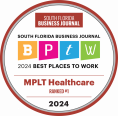If you’re a nurse practitioner (NP), you hit the jackpot. The use of nurse practitioners for primary care is taking off, and it doesn’t seem to be slowing down.
Maryland signed the Nurse Practitioner Full Practice Authority into law, becoming the 21st state to give NPs full independence to practice without an agreement or oversight from a physician.
Now, patients are flocking over to their clinics rather than seeing a primary physician for minor treatments, like a cold or ear infection.
What’s Causing the Shift in Medical Providers?
Scheduling an appointment with a doctor is becoming as difficult as parents trying to schedule dinner with their teenager. You wait hours to see them, and barely get a “Hello.”
It’s not the doctor’s faults though. There just aren’t enough doctors to go around.
The baby boomer generation is getting older and requiring additional care, while aging physicians are preparing to retire. To top it off, an estimated 30 million Americans are now insured since the enactment of the Affordable Care Act in 2010.
Filling the Gap - Alternative Care Providers
The Bureau of Labor Statistics estimates job growth for advanced-practice registered nurses (APRNs) to rise by 31 percent between the years 2012 and 2022.
APRNs are opening clinics of their own, or working in nurse-led practices to fill the gap in health care, and offering affordable rates for patients.
Fifty years of data prove “that NPs provide high-quality, cost-effective and safe care that can improve access and make healthcare delivery more efficient when NPs are authorized to practice at the top of their education and national certification,” said the American Association of Nurse Practitioners President Ken Miller.
In addition, new research is showing patients treated by nurse practitioners have lower heath care cost and have fewer trips to the emergency room.
A study from Nursing Economic$, found that Certified Registered Nurse Anesthetists (CRNAs), who are already the primary providers of anesthesia services in rural America, provide the majority of anesthesia care in U.S. counties with lower-income populations and populations that are more likely to be uninsured or unemployed.
Education and Experience
Local and national advocates for full NP autonomy say, given a NPs education and experience they can deliver the same quality care as licensed physicians. Since more states are acknowledging the benefits for alternative healthcare, nurses are seeking higher education.
According to a National Academies of Sciences, Engineering and Medicine review of the progress made since the 2010 Institute of Medicine report states:
“Baccalaureate program enrollment has increased substantially in the last five years, with entry-level enrollment increasing to 172,794 in 2014 from 147,935 in 2010. Registered nurses who enrolled in Bachelor of Science in nursing completion programs increased to 130,345 in 2014 from 77,259 in 2010.”
The report also suggests by 2020, 80 percent of nurses should attain a bachelor’s degree, and doubling the number of nurses who have doctorates.
NPs that have two years of post-graduate education and advanced training can prescribe certain drugs, diagnose, and treat routine and complex medical conditions without physician oversight. If they come across an issue out of their scope, they will refer the patient to a physician.
Laws that give NPs more authority are not replacing traditional medicine, it’s improving it. The overall goal for walk-in clinics, nurse-led practices, urgent care clinics or primary physicians is to maximize and improve the health of their patients, regardless where they go to get treated.









